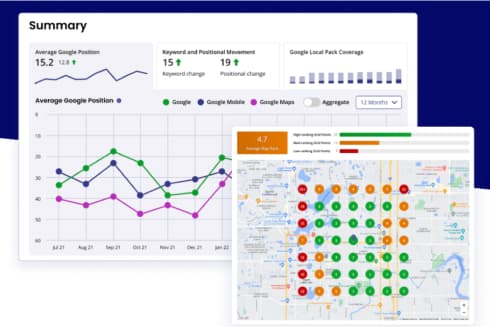What is Benchmarking and What Advantages Does It Offer to Any Company
In an increasingly competitive business environment, companies constantly seek ways to improve their performance and stay ahead. One of the most effective tools for achieving this is benchmarking. But what exactly is benchmarking and why is it so valuable for companies? In this article, we will explore how this practice allows organizations to compare their processes and results with those of industry leaders, identify areas for improvement, and ultimately boost efficiency and competitiveness.
We will discover the various advantages that benchmarking can bring to companies, from continuous improvement to innovation, and how to implement it effectively to achieve tangible results.
What is Benchmarking?
Benchmarking is a strategic management tool that allows companies to evaluate and compare their processes, products, and services with those of other leading organizations in their industry. Through this comparison, companies can identify best practices, detect areas for improvement, and adopt new strategies to optimize their performance. This process involves collecting and analyzing both internal and external data to understand where improvements can be made and how to achieve superior performance.
Importance of Benchmarking
Benchmarking is fundamental for companies looking to remain competitive in a constantly changing market environment. By comparing their processes and results with those of the top companies in the sector, organizations can identify performance gaps and find opportunities for improvement. This practice not only helps to detect inefficiencies but also inspires companies to adopt innovations and advanced practices that have proven successful in other contexts.
Additionally, benchmarking fosters a culture of continuous improvement within the organization. By constantly keeping an eye on industry best practices, companies are motivated to innovate and regularly optimize their processes. This can lead to greater operational efficiency, cost reduction, and better quality of products and services, ultimately resulting in increased customer satisfaction and a sustainable competitive advantage.
Another crucial aspect of benchmarking is its ability to provide an external perspective. Companies can often fall into the trap of focusing too much on their own processes and losing sight of industry trends and developments. Benchmarking offers an external view that can reveal new growth and adaptation opportunities that may not be evident through a limited internal assessment.
Benchmarking also plays a key role in strategic decision-making. By relying on data and proven practices, companies can make more informed and evidence-based decisions about where to invest their resources and how to adjust their strategies for greater impact. This reduces the risk of failures and increases the likelihood of success in implementing significant changes.
Objectives of Benchmarking
Benchmarking pursues a variety of objectives that help companies improve their performance and remain competitive. These objectives include:
- Identifying Best Practices: Detect and learn from the most effective strategies and processes used by industry leaders.
- Evaluating Performance: Compare one’s own processes and results with those of other organizations to understand performance levels and detect areas for improvement.
- Fostering Innovation: Inspire new ideas and approaches by observing how other companies solve similar problems and optimize their operations.
- Improving Efficiency: Discover methods to reduce costs, save time, and optimize resource use, improving productivity and operational efficiency.
- Increasing Customer Satisfaction: Adopt practices that have proven successful in improving the quality of products and services, resulting in higher customer satisfaction.
- Fostering Continuous Improvement: Create an organizational culture that values continuous improvement through the regular implementation of new practices and adaptation to market changes.
- Making Informed Decisions: Provide a solid data foundation that supports strategic decision-making, reducing risk and increasing the chances of success.
- Evaluating Competitiveness: Measure the company’s competitive position in the market and adjust strategies to improve its competitive advantage.
- Facilitating Organizational Learning: Promote learning and development within the organization by sharing knowledge and successful practices between different departments and teams.
These objectives allow companies to use benchmarking as a powerful tool to drive their growth and sustainability in the market.
Types of Benchmarking
Benchmarking can be classified into several types, each with a specific focus and purpose. Below are the main types of benchmarking that companies can use to improve their performance.
Generic Benchmarking:
Generic benchmarking refers to comparing general processes or functions that are not limited to a specific industry. This type seeks to identify best practices that are applicable to any organization, regardless of its sector. For example, human resources management practices, information technology, and project management can be evaluated through generic benchmarking. This approach allows companies to adopt universal practices that enhance efficiency and effectiveness across multiple operational areas.
Internal Benchmarking:
Internal benchmarking is conducted within the same organization. This type involves comparing practices and processes between different departments, business units, or subsidiaries of the company. By doing so, organizations can identify internal best practices and replicate them in other areas to improve overall efficiency and cohesion. This approach is especially useful for large companies with multiple divisions, where coordination and standardization can be challenging.
Competitive Benchmarking:
Competitive benchmarking focuses on direct comparison with competitors in the same sector. This type aims to assess the company’s performance relative to its main competitors, identifying areas where the company can improve to gain a competitive advantage. Data collection can be more challenging due to the confidential nature of competitors’ information, but companies can rely on public sources, market reports, and case studies to obtain the necessary information.
Functional Benchmarking:
Functional benchmarking involves comparing similar processes across different industries. This type focuses on specific functions, such as supply chain management, customer service, or production, regardless of the industry in which the company operates. By learning from organizations in other industries that have perfected these processes, companies can adapt and adopt innovative practices to improve their own performance. This approach offers a broader perspective and can reveal solutions that are not apparent within the context of the company’s own industry.
How to Perform Benchmarking
Conducting effective benchmarking involves following a series of structured steps that allow companies to compare their processes with those of leading organizations and apply best practices. Below are the key steps to successfully carry out benchmarking:
1. Identify What to Benchmark
The first step is to determine which processes, products, or services will be evaluated. It is crucial to select areas that are critical to the company’s success and that could benefit significantly from improvements. Accurate identification of these elements helps focus efforts and achieve more relevant and useful results.
2. Define Competitors and Industry Leaders
Once the areas to be evaluated are identified, it is crucial to determine against whom the comparison will be made. This includes selecting direct competitors and industry leaders, as well as organizations from other industries that have implemented successful practices. Choosing the right organizations for benchmarking is essential for obtaining valuable and applicable data.
3. Collect Data
Data collection is a fundamental stage of benchmarking. Both internal data, reflecting the company’s current performance, and external data, providing information about the practices of selected companies, should be gathered. Data sources can include financial reports, market studies, industry publications, and interviews with experts. Ensuring the accuracy and relevance of the collected data is important.
4. Analyze and Compare
Once the data is collected, the next step is to analyze and compare it with the company’s internal processes and results. This comparison helps identify performance gaps and areas where the company can improve. The analysis should be detailed and consider multiple factors to gain a comprehensive view of comparative performance.
5. Identify Best Practices
Analyzing the data will help identify the best practices that leading companies are using to achieve their success. These practices may include efficient production methods, innovative marketing strategies, advanced technologies, or effective management approaches. Identifying these practices provides a clear roadmap for implementing improvements within the company.
6. Develop an Action Plan
Based on the identified best practices, an action plan should be developed detailing how these practices will be implemented in the company. The plan should include specific objectives, timelines, necessary resources, and responsible parties. A well-structured action plan ensures that improvements are implemented effectively and in a reasonable timeframe.
7. Implement and Monitor
Implementing the action plan is a crucial step in turning ideas into tangible results. It is important to continuously track progress and monitor results to ensure that the improvements are having the desired impact. This monitoring allows for adjustments and continuous optimizations to maximize the benefits of benchmarking.
8. Evaluate and Repeat
Finally, it is essential to evaluate the success of the benchmarking process and the results obtained. This evaluation helps identify which aspects of the process were effective and which can be improved in the future. Benchmarking is an ongoing process, and companies should repeat it periodically to stay competitive and adapt to market changes.
By following these steps, companies can carry out effective benchmarking that allows them to improve their performance, adopt innovative practices, and maintain a competitive advantage in their industry.
Tools for Digital Benchmarking
Conducting effective digital benchmarking requires the use of specialized tools that facilitate data collection, analysis, and comparison. Below are three key tools that can help companies perform successful digital benchmarking:
1. Google Analytics
Google Analytics is an essential tool for digital benchmarking as it provides a wealth of data about website performance. With Google Analytics, companies can:
- Measure Web Traffic: Analyze the number of visitors, page views, time on site, and other important metrics.
- Evaluate User Behavior: Understand how users interact with the website, which pages they visit most frequently, and where they exit the site.
- Compare with Competitors: Use Google Analytics’ benchmarking reports to see how the website’s performance compares to other companies in the same industry. This feature helps identify areas for improvement and opportunities to optimize digital performance.
2. SEMrush
SEMrush is a comprehensive digital marketing tool that offers a wide range of functionalities for benchmarking. Some of the most useful features include:
- Competitor Analysis: Allows comparison of your website’s performance with competitors in terms of traffic, keywords, backlinks, and more.
- Keyword Research: Helps identify the most effective keywords used by competitors and how to better position yourself for them.
- Site Audit: Provides detailed reports on website health, identifying technical issues and improvement opportunities.
- Backlink Analysis: Allows analysis of competitors’ backlink strategies, identifying opportunities to build a stronger link strategy.
3. SimilarWeb
SimilarWeb is another powerful tool for digital benchmarking, particularly useful for competitive analysis. Its main features include:
Web Traffic Analysis: Provides detailed information about competitors’ traffic sources, including direct, referral, search, social, and display traffic.
Digital Marketing Intelligence: Offers data on competitors’ digital marketing strategies, including advertising campaigns and social media presence.
Mobile App Performance: Allows comparison of mobile app performance, which is crucial for companies with a strong mobile presence.
Industry Analysis: Provides an overview of industry performance, helping companies understand trends and position themselves better in the market.
These tools are essential for any company looking to conduct effective digital benchmarking. By utilizing Google Analytics, SEMrush, and SimilarWeb, organizations can gain a comprehensive view of their digital performance, identify improvement opportunities, and stay competitive in the dynamic digital landscape.
Examples of Benchmarking
Benchmarking can be applied in various contexts and sectors, offering valuable opportunities for improvement and learning. Below are some examples of how different types of benchmarking can be utilized in practice.
Benchmarking in the Supply Chain
An electronics manufacturer might perform benchmarking in its supply chain to enhance efficiency and reduce costs. By comparing its procurement, production, and distribution processes with industry leaders like Apple or Samsung, the manufacturer can identify areas for improvement in inventory management, delivery times, and supplier relationships. For example, it might be discovered that automating certain stages of production and implementing advanced inventory tracking technologies could significantly improve operational efficiency and reduce costs.
Benchmarking in Customer Service
A telecommunications company could conduct benchmarking in its customer service by comparing its practices with those of other companies renowned for excellent customer service, such as Amazon or Zappos. Through this comparison, the telecommunications company can identify improvements in staff training, CRM system implementation, and optimization of communication channels like live chat and social media. This approach can lead to increased customer satisfaction, retention, and loyalty.
Benchmarking in Digital Marketing
An online store looking to enhance its digital marketing strategy might perform benchmarking against direct competitors and e-commerce leaders like Shopify or eBay. Using tools like SEMrush and Google Analytics, the store can analyze the performance of its paid advertising campaigns, SEO strategies, and social media presence. Through this analysis, the store can identify more effective keywords, improve the content to attract organic traffic, and optimize ads for better return on investment.
Benchmarking in Innovation
A technology company aiming to boost innovation could benchmark its research and development (R&D) processes against those of pioneering companies like Google or Tesla. The company can assess how these organizations manage their R&D teams, foster creativity, and accelerate product development cycles. For instance, it might discover the importance of creating a collaborative work environment, investing in continuous training, and establishing quick feedback mechanisms to enhance the efficiency and effectiveness of innovation efforts.
Benchmarking in Sustainability
A consumer goods company that wishes to improve its sustainability practices might benchmark its environmental practices against those of leading sustainable companies like Patagonia or Unilever. By evaluating aspects such as waste management, renewable energy use, and carbon footprint reduction, the company can identify strategies to minimize its environmental impact. For example, it could adopt stricter recycling policies, invest in clean technologies, and promote responsible consumption practices among its customers and employees.
These examples illustrate how benchmarking can be applied in different functional areas and sectors, offering valuable opportunities for continuous improvement and business competitiveness. By learning from the best practices of other organizations, companies can implement strategic changes that lead to greater success and long-term sustainability.
Conclusión
Benchmarking is a crucial strategic tool for any company aiming to improve performance and competitiveness in the market. By comparing processes, products, and services with those of leading organizations, companies can identify areas for improvement, adopt best practices, and innovate continuously. Whether evaluating the supply chain, customer service, digital marketing strategies, innovation processes, or sustainability practices, benchmarking provides a clear and actionable insight for driving growth and efficiency.
By using specialized tools such as Google Analytics, SEMrush, and SimilarWeb, companies can gather and analyze relevant data, enabling them to make informed and strategic decisions. In summary, benchmarking not only helps organizations stay competitive but also fosters a culture of continuous improvement, innovation, and operational excellence. By implementing effective benchmarking, companies can secure long-term success in a dynamic and ever-evolving business environment.












